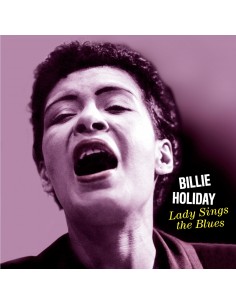Kind of Blue + 4 Bonus Tracks
Miles DavisContains new specially prepared liner notes by PENGUIN GUIDE TO JAZZ’s writer BRIAN MORTON and by Paris’ prestigious JAZZ MAGAZINE
INCLUDES 4 BONUS TRACKS
“Tension is established within the ensemble and then gloriously discharged by Davis and Coltrane. The whole has a weightless and haunting quality, sustained by steady, unhurried tempos and a balance of sound that has rarely been equaled in the history of jazz recording. Kind of Blue is a record that almost everyone seems to own, but everyone should buy it again every few years and listen to it absolutely fresh.” PENGUIN GUIDE TO JAZZ
“If there are indeed only a handful of albums that marked their own times in the way that Kind of Blue did, there are even less which, 60 years later, continue to bear the same importance. The members of this group would soon enter the firmament of jazz legends. The trumpeter was able to blend their contrasts, John Coltrane’s fluid, and burning breath, Bill Evans’ impressionist harmonies, in order to produce an album that is justly considered among the most precious in the history of recorded music.” JAZZ MAGAZINE
PERSONNEL:
Miles Davis, trumpet
Julian "Cannonball" Adderley, alto sax
John Coltrane, tenor sax
Bill Evans, piano (on all tracks except track 2)
Wynton Kelly, piano (on track 2 only)
Paul Chambers, bass
Jimmy Cobb, drums
New York, March 2, 1959 (tracks 1-3) & April 22, 1959 (tracks 4-5).
TRACKS:
01. So What
02. Freddie Freeloader
03. Blue in Green
04. All Blues
05. Flamenco Sketches
06. Blue in Green [Bill Evans Trio version] (*)
07. Surrey with the Fringe on Top (*)
08. Something I Dreamed Last Night (*)
09. Diane (*)
TOTAL TIME: 75:21 min.
- Format
- CD
- Discs
- 1
- Label code
- 170027
 Cookie preferences
Cookie preferences























































